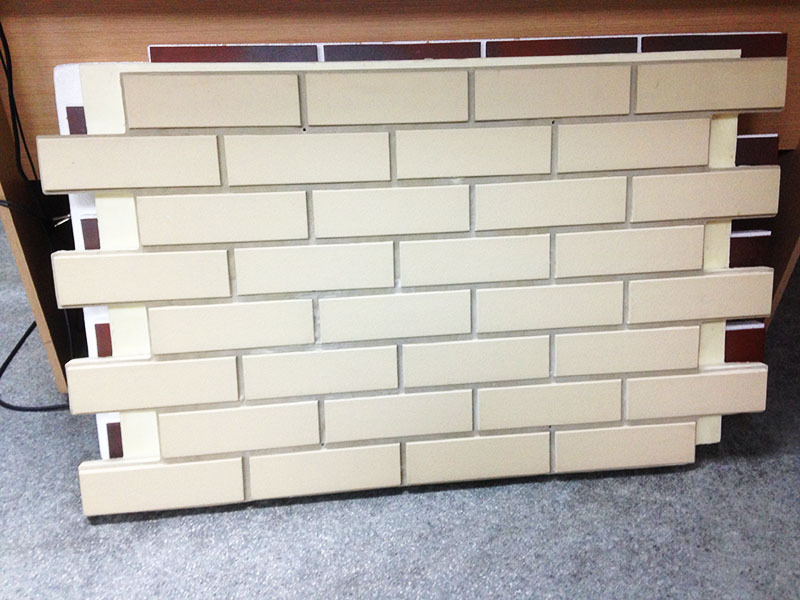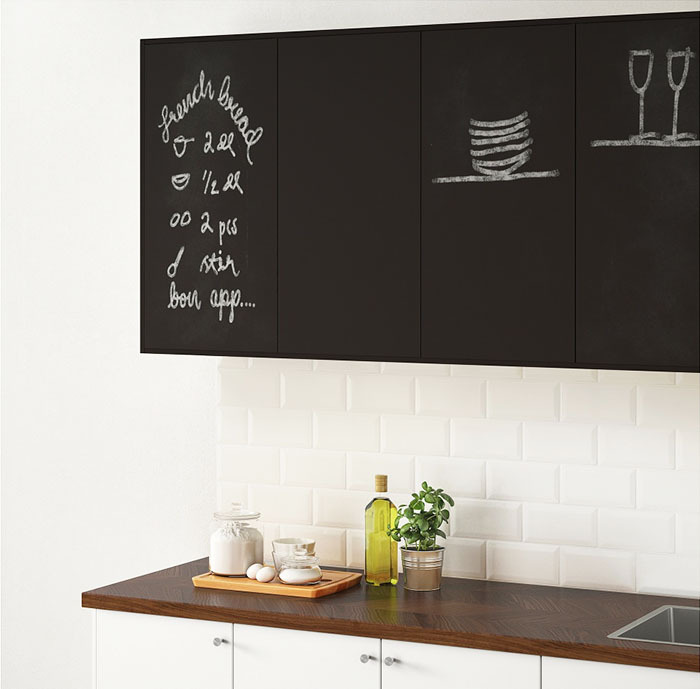Applications from dried leaves and branches - an interesting, original hobby. But before making a herbarium, it is necessary to stock up on various types of material. To collect raw materials for the compositions can be in the summer and autumn. For each type of plant is the most appropriate time, when the shoots and leaves take beautiful color. Collecting, drying, storage of leaves - a truly creative process. Modern methods of preparation of the material allow us to see in a simple real art herbarium.
Content
- What is an herbarium
- What plants and how to collect
-
Options and drying plants rules
- natural drying
-
Flat drying under pressure
- How to make news with his own hands
- The bulk drying of bulk materials
- Drying using glycerol
- Fast drying appliances
-
How to use the dried samples
- Create an album
- Creating paintings and panels
- Making cards
- Creating decorative wreaths
- Composition: the rules of drawing up of dried flowers
- Storage herbaria and care
- conclusion
What is an herbarium
Collect absolutely all objects. Collection of natural plant parts called herbarium. With the Latin herba - grass. Previously kept straightened and leaves for handicrafts using paper. Made this method popular botanist Luca Ghini. Due to the hygroscopic properties of the material lists can be long in a certain position and not spoiled.
Modern scientists in the field of botany, biology continue to collect rare species. Apart from the usual papermaking process, collection placed into digital herbarium. Information on the form contained in the scanned photo of the plant. The largest congregation are in museums, research institutes of the USA, France and Switzerland.

Home collections are common, have their own names. They are used to decorate the interior work on creative activities in kindergartens and elementary school classes with them. Store them in a regular folder, homemade boxes on the wall under the glass. simple available materials can be used to create a herbarium. It is enough to inspire liked the idea and get to work.
What plants and how to collect
The choice of plant material for the collection depends on the purpose of its creation. Typical examples of the usual color, medium form suitable for scientific and educational herbarium. To create a decorative bouquets fit most bizarre grass. It should be bright elements intact. It is necessary to take a sheet with a margin to be able to replace damaged sheet during drying or during gluing.

Collect a variety of plants can in your own garden, in the park, in the schoolyard. To choose a good herbarium specimens should adhere to the following rules:
- Go in search of a material can be only in dry weather;
- The best time to collect - noon or evening, when all the moisture has evaporated as much as possible;
- Small plants are removed from the ground, together with the root, to be able to evaluate all of its parts;
- If needed the herbarium of the tree or shrub, choose the most outstanding of his region, for which it will be easier to identify;
- If you want to view the type of records in the shoots of hardwood, they should be cut with a sharp knife;
- To collect suitable only healthy part of the plant. You need not be present symptoms of the disease, attack by pests and other defects;
- To make an accurate description of a plant, the types of information should be recorded when they are still in their natural habitat.
Options and drying plants rules
Almost any flower, from a simple field of daisies to the noble roses may turn into an excellent material for postcards and billboards. To reduce the loss on drying, it is necessary to know how to store plants for handicrafts. There are many ways to prepare the material, through which you can make flat materials or to preserve its original shape and color.

natural drying
The easiest way to dry - outdoors. It is popular among owners of private houses. Enough to collect flowers or herbs to form small bunches and hang on the rope for the stems. If the beams are not thick, they can simply spread out on a flat surface. Under these underlie the paper towel and leave in a well-blown place. Cover, it is not recommended to expose to the sun herbarium.
See also:Wallpaper on the wall in a frame: the ways and the idea of a mural
The method allows to prepare natural drying at once a large number of plant material. This process can last 1-3 weeks, depending on the thickness of the stem and bud size. It should be understood that any harvesting straighten up and give it a curved shape is already difficult. Decor elements for future scaling down of the plan conceived and fixed. After drying stalk enough sprinkle varnish.

Flat drying under pressure
This will help the plant to make the most attractive and stored in this form for a long time. This technique appeared one of the first, and remains the most popular for many years. But drying is not suitable flat for all plants. In a particularly juicy specimens have several times a day to change the absorbent sheets.
The most popular variant of dry flat leaves - putting them in a large book between pages. Greens straightened and covered with paper. For the weighting added to the press. It may be a few other books, or any heavy object (iron, container of water, etc.). The main thing - to ensure complete rest samples to exclude them shifting of.

If the book version is suitable for lovers, then use a special press for a large-scale professional drying. A more complicated design comprises two identical plates with holes at the edges for bonding. Vegetable elements are placed on a plane and are clamped by means of drawstrings. For better and faster drying of the press bring to the street in the daytime.
How to make news with his own hands
To make a good home-press drying plant is very easy. It requires two pieces of plywood sized album sheet, drill, four bolts with nuts, several sheets of cardboard. The work is as follows:
- Along the edges of the tree and mark the holes are drilled based on thread dimensions;
- The lower base product insert screws;
- Cardboard should be laid, it put the plants for a herbarium;
- Cover with another sheet of blotter and cardboard disposal leaves in several layers;
- Dress up the wooden cover on the screws and tighten;

During drying, all of the plants acquire the surface shape, on which lie. Corrugated cardboard, corrugated wipes can be used only when the need to create a certain image.
The bulk drying of bulk materials
To keep the samples in the maximum natural form, is used in drying bulk materials. This way you can get a stunning natural specimens for the bulk of paintings, flowers, children's crafts. Required to find a suitable size container and the filler. As material for drying can be any material that absorbs moisture. Fit of silica gel, cat filler for the toilet on its base, sand and other.
Put in a bowl samples caps and gently fall asleep down particulate material for bulk drying. It is important to proceed slowly, being careful not to damage the delicate petals. All parts of the plant must be completely covered.

Drying time depends on the type and size of the plants. On average it is 2-3 weeks. When it is time to get a blank for herbarium, it is necessary to pour an upper layer of the filler and gently pull the stem. The residual particulate material is not suitable for reuse.
Drying using glycerol
This method is used if necessary to keep the buds and leaves are resilient and natural. Glycerin will make the color green and the petals darker and more saturated. The solution for storage can prepare yourself from simple components.
See also:The decor of the box with their hands - examples and photo ideas
The prepared tank pour water, adding glycerol at a ratio (3: 1). Knead the mixture well. On the stem of each plant make longitudinal incisions with a knife or blade, is immersed in a liquid. In this environment, the workpiece must be 3-5 days. During this time, it is necessary to pour the solution, because it will quickly evaporate.

Determine the degree of impregnation can be in color. We finished plant petals and leaves darken considerably. After taking the samples should be spread out on paper and put in a dark place, protected from dust. To make the original color of the buds, they can be a little touch up of the sprayer or at the stage of immersion in glycerin to add food coloring.
Fast drying appliances
Rapid methods of drying appliances reduces the process to one day, but may adversely affect the quality of the plants. Due to the high probability of ruin sample to such methods is resorted to only in extreme cases. Organize home drying by using the following appliances:
- Iron. Natural material is placed between two sheets of paper, ironed with a hot iron to completely evaporate moisture.
- Microwave. It is necessary to put the flowers in layers between the tile and tie. Layer can be made from cardboard or watercolor paper.
- Oven. Large flowers stems are placed on a baking sheet and dry treated at a low temperature.
- Hair dryer. Blown leaves and flowers with hot air by adjusting its temperature. To the samples were not folded, drying is carried out with a respite of several approaches.

How to use the dried samples
After the most difficult stages of preparation of herbarium completed, you can create original interior decoration, the production of beautiful handicrafts. Rare samples can replenish their collection or delay deposited to a suitable moment. There are many interesting ideas, allowing the use of dried plants from the practical and aesthetic use.

Create an album
Special album for the samples can be used as a place of storage or display of the collection of vegetation. You can purchase ready-made products for special purposes in the store or do it yourself. Design absolutely any - with the ability to group by color, type, size. Plants can be attached firmly or temporarily fixed.
Solid album for a herbarium can only be paper. Natural materials are better preserved if the contact will only tracing paper and cardboard. On the same page can be located one instance or group. If you created a herbarium for subsequent use, the samples can be placed in a transparent and collect files in the folder, the folder.

Creating paintings and panels
Flat wall or floor decoration - one of the most simple interior decoration. Panels of dried herbs or flowers can be any size, represent a rare single copy or different composition. Small picture of yellow leaves make in the schools with the onset of autumn.
To create a flat wooden artefacts require photo frame, a sheet of paper, two identical glass A4 size and strong fixing adhesive. One glass cover with a white sheet and lay it on the plants at the planned scheme. Calculations easier to do from the middle of the sheet is gradually moving away to the edges. Cover with a second glass plant and put in a frame, pre-glue missed the edge.

Making cards
Postcard from natural materials, made with his own hands, will be the best gift. As decoration, you can use three-dimensional flowers or flat leaves. Select a suitable size and color cardboard, spread it on the dried workpiece. They should be sure to secure it with the glue. In order to eliminate falling off and deformation of leaves, cover their self-adhesive film for books. The top layer should be pressed cards and well ironed handle scissors, getting rid of the voids. Excess film is cut off at the edges.
See also:Original ideas crafts with their hands
Gift card does not necessarily have to have a standard size. As a basis you can use an ordinary sheet of paper or a thin strip-tab. Can execute in a landscape or portrait, with the addition of the drawing.

Creating decorative wreaths
The original decoration of the interior is not necessarily held back to a certain holiday. Beautiful crafts can be hung on a door or wall at any moment. The main parts used herbarium collected in summer and autumn. Properly dried samples can be attached to the ring at any time of the year.
To create an autumn wreath of dry material need to stock up on plenty of bright colors and leaves. For framework required wire, thread, food film. As an added decor fit bows, beads, butterflies and other little things. Done quickly and correctly can be a natural wreath, if you follow the following instructions:
- Cooking ground. Twist the wire ring several times. At this stage it is necessary to provide a loop for hanging the finished product.
- Divide the bunches to the herbarium is applied to the frame.
- Cut from the skein edible film spool 5 cm.
- Primatyvaem film alternately dry plants to the ground, trying to give the amount of the product.

If dry preform discolored during storage or just do not have the right kinds of crafts, the finished wreath can be coated with paint in any color from the spray gun.
Composition: the rules of drawing up of dried flowers
Plants that have an attractive appearance after drying, many vacationers are grown intentionally. They can remain on the site throughout the winter, or for decorative purposes can be foiled green and dried to create stunning bulk compositions. Often thrown Lunaria, Immortelle, heather, and other zaytsehvost.
To create a composition of dried flowers require low and wide pot. Capacity does not have to be at the bottom of the hole, it performs a purely decorative function. The plants have stood longer and sprinkle on the bottom of the vase placed floral sponge. Using scissors, attach penofloru necessary form and insert it into the stems of plants. Making composition should be held according to the following rules:
- The largest items should be put in the first place according to the idea. It is better to put them in the center.
- Distribute dried flowers original shape, color, or where the least amount evenly.
- Insert the vertical elements. The best place to spiciform plants - close to the most inexpressive flowers.
- Along the edges of the composition put bushy twigs, e.g., heather.
- The remaining voids need to decorate small low plants.

Storage herbaria and care
Since the dried plants are very hygroscopic, their first enemy - moisture. The moisture they immediately spoiled. Keep herbarium is possible only in a dry place, in unopened albums or folders. To protect valuable collections of insects attacking them periodically treated with insecticide.
To save a collection of dried plants as long as possible, it is necessary to take good care of him. Fragile specimens react negatively to even the slightest external influences (rise in temperature, humidity, shock and so on). special techniques listed on the title page of each collection designed for the treatment of valuable historical herbarium collections.

Each collector is simply obliged to mark label all the plants. Supply of dead wood, which has not yet been glued or used for decoration, should be stored in special folders with padded sheets or stacks of paper.
conclusion
Dried plants - it's not just a great decoration, but also a visual aid, material for handicrafts. Of beautiful leaves, twigs can be a vivid picture or a full card. Crafts from dried raw materials make even a child, perfectly fit into any interior. Eco style accepts all natural, therefore, a panel of colors, three-dimensional composition will be especially look good in it.



